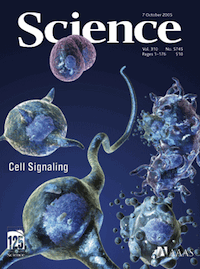
as people wrestle with the place of God and faith in their lives; but there is
another crisis of faith that is happening as well. Many are wondering how much
we can trust science and the articles published in our scientific journals. We
have witnessed a number of tragic situations in which articles has been
retracted because the results were not reproducible, often as someone did not
pay enough attention to the statistical significance of their data. We have
seen situations in which the pressure to produce papers (the publish or perish
mentality) have led some to falsify data to get a publication. It is also
difficult to get papers published for work that does not support a reigning theory
and so some information never makes it to the public sphere.
playing the games refereed by journal editors. “Journal editors attempt to
judge which papers will have the greatest impact and interest and consequently
those with the most surprising, controversial, or novel results,” Reinhart
points out. “This is a recipe for truth inflation.”
riddled with wrongness. It’s almost a miracle that so much truth actually does,
eventually, leak out of this process.[1]
Science is a discipline which uses reason,
logic, and the search for truth; but the discipline is only as accurate as the
biases inherent in normal human interactions. Therefore, the reason, logic, and
truth of science can be flawed. Neither Siegfried nor I are suggesting that we
cannot trust science and the majority of our scientific publications; but we
must watch for potential bias and flaws in the logic. Often, we must look to
the parts of papers that are really not that interesting (the footnotes, the
statistical analysis, and methodologies) to make a fair assessment of the
accuracy of a particular finding. We must not turn off our brains and trust
that the researchers and journal editors have done their job of vetting the
data.
is heroic, with a tragic (statistical) flaw – Tom Siegfried, Science News,
July 2, 2015;
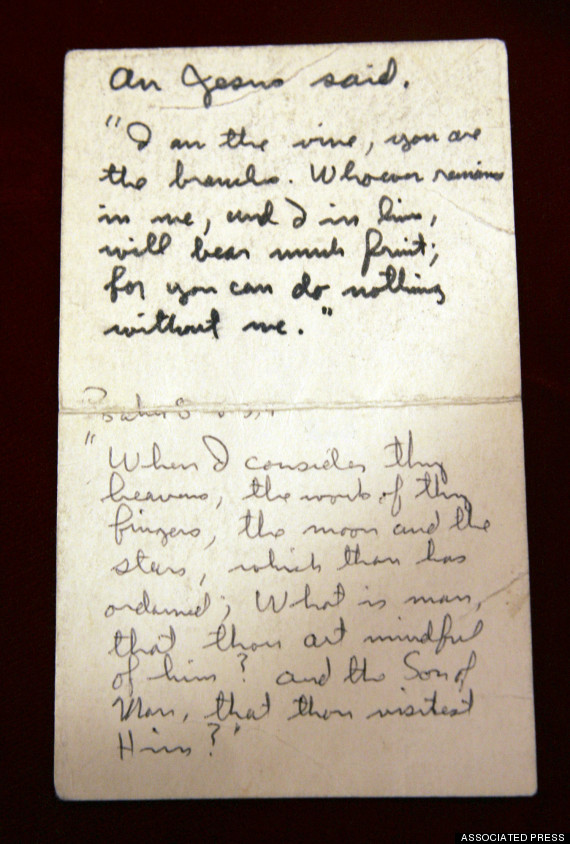
Edwin
Aldrin, better known as Buzz Aldrin, turned 85 last January. If he can
celebrate a few more birthdays he will be on track to celebrate the 50th
anniversary of the first manned moon landing on July 20th. Aldrin
piloted the Apollo 11 Lunar Module (LM) to the surface of the moon and landed
it at 20:18 UTC on July 20, 1969. Six hours later at 02:56 UTC on July 21,
1969, Neil Armstrong and he stepped onto the surface of the moon.
an elder in the Webster Presbyterian Church, had decided to take a home
communion kit with him on the flight to the lunar surface. While still in the
LM he spoke these words over the radio contact with mission control.
I’d like to take this
opportunity to ask every person listening in, whoever and wherever they may be,
to pause for a moment and contemplate the events of the past few hours, and to
give thanks in his or her own way. (Listen to the recording here)
then read a portion of the Bible to himself, ate a small piece of bread, and
drank a tiny chalice of wine as a brief ceremony known as communion. Webster
Presbyterian Church in Webster, Texas has the chalice used for communion on the
Moon, and commemorates the event annually on the Sunday closest to July 20 with
what has come to be known as Lunar Communion Sunday.
Aldrin has lived an incredible life which has been described in his book Magnificent Desolation. It tells of
moments of greatness like his contributions to the Apollo landing and his
discovery of an Earth/Mars orbit called the Aldrin Cycler; but it also tells of
times of depression, alcoholism, and marital struggle. Aldrin later stated that
he has now had second thoughts about how he celebrated the moon landing.
Perhaps, if I had it to do over
again, I would not choose to celebrate communion. Although it was a deeply
meaningful experience for me, it was a Christian sacrament, and we had come to
the moon in the name of all mankind — be they Christians, Jews, Muslims,
animists, agnostics, or atheists. But at the time I could think of no better
way to acknowledge the enormity of the Apollo 11 experience than by giving
thanks to God. It was my hope that people would keep the whole event in their
minds and see, beyond minor details and technical achievements, a deeper
meaning — a challenge, and the human need to explore whatever is above us,
below us, or out there.
“Buzz” Aldrin is certainly an interesting and complex man. He has the capacity
to inspire us to do great things and dream big. He has also learned to give
thanks and live a grateful life. May he inspire us to do the same.
The latest images from the New Horizons spacecraft, which is headed for a rendezvous with Pluto on July 14th, show a series of four dark spots on the lower edge of the visible disc. The pictures were taken on June 25th and 27th when the vehicle was approximately 22 million kilometers from Pluto. Some are speculating that these spots may be evidence of clouds in the atmosphere and the shadows those clouds create on the dwarf planet’s surface. Analysts will continue to watch for other developments as New Horizons continues to approach Pluto and its moon Charon. The atmosphere of Pluto is certainly one of the significant aspects of study for this probe and New Horizons raced to get to the planet before the atmosphere could freeze over on its long journey away from the sun (see my previous blog here).
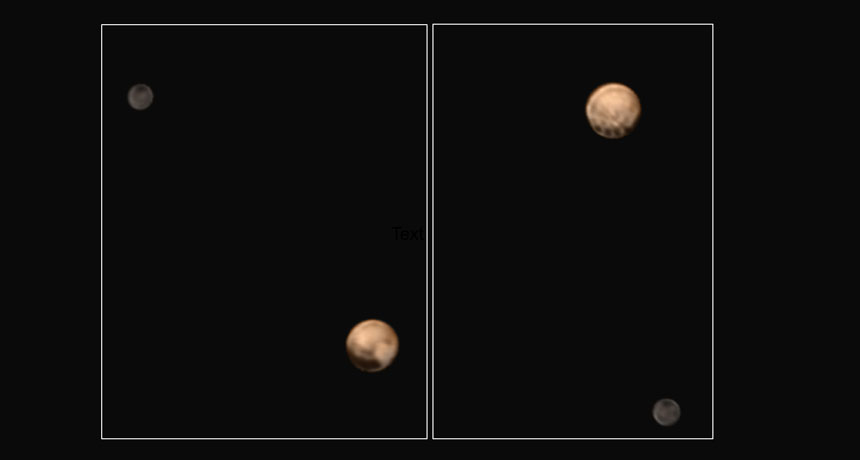
NASA’s website will have more images and live commentary as the probe gets closer to her July 14th flyby. Check back with them regularly for more information.
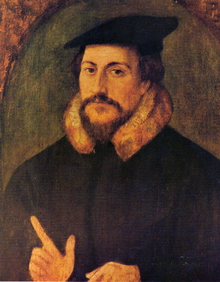
I have not read much of John Calvin, but it is worthwhile to meditate upon these words:
This is the wondrous exchange [mirifica commutatio] made by his boundless
goodness. Having become with us the Son of Man, he has made us with himself
sons of God. By his own descent to the earth he has prepared our ascent to
heaven. Having received our mortality, he has bestowed on us his immortality.
Having undertaken our weakness, he has made us strong in his strength. Having
submitted to our poverty, he has transferred to us his riches. Having taken
upon himself the burden of unrighteousness with which we were oppressed, he has
clothed us with his righteousness.– John Calvin in Institutes of the Christian Religion.
May we all experience this wondrous exchange.
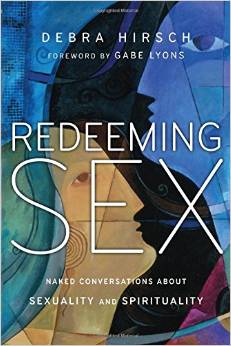
Debra Hirsch has written her first solo book and I want to
highly recommend it. Hirsch previously wrote Untamed: Reactivating a
Missional Form of Discipleship with her husband Alan Hirsch and now
she turns to the topic of sexuality with her book, Redeeming Sex: Naked
Conversations About Sexuality and Spirituality. In
it she reveals much about her own journey of faith and the course her understanding
of sexuality has taken from early adolescence to her current understanding.
explains a hermeneutical approach that allows us to distinquish other difficult
ethical and cultural issues from the issue of holistic sexuality. She desires
that we see how intrinsic sexuality is to our very being and says, “Sexuality
is written through every aspect of who we are. We need to adopt a view of
sexuality that encompasses all of our humanity, not just our genitals.”
(p. 70, 71)
on sex. She quotes James Nelson (Reuniting Sexuality and Spirituality)
and reminds us that,
at its best has recognized that sin is not fundamentally an act but rather the
condition of alienation or estrangement out of which harmful acts may arise.
However, it has taken a long time for theology to acknowledge that sexual sin
is fundamentally alienation from our divinely intended sexuality.
I hope accurately: sexual sin lies not in being too sexual, but in being not
sexual enough – in the way God intended us to be. Such alienation, indeed,
usually leads to harmful acts, but the sin is rooted in the prior condition.
(p. 78)
sin and that our brothers and sisters who find themselves in the LGBTQ
community are no more or less broken than those who find themselves outside of
the LGBTQ community.
that we are (sexuality included), in order to receive saving grace. No one is
excluded from this call, and there is certainly absolutely no room for self-righteousness,
because we are all – at the end of the day and to the end of time – beggars
showing the other beggars where to get the bread. (p. 122)
heaven and get there by grace. There is no room for self-righteousness and
exclusion based on disputed interpretations on non-essential issues of the
Bible. (p. 131)
celibacy and urges us to encourage those who make such a commitment. “. . . we
need to take a fresh look again at celibacy; it’s not the spooky monster it’s
made out to be.” (p. 129)
J. Webb and is called the “redemptive-movement hermeneutic.” (p. 139-147) This
allows Hirsch to come to a traditional understanding that homosexual activity
is sinful alongside other forms of sexual sin (heterosexual or homosexual).
But, she then emphasises that we Christians have often been guilty of leading
with theology. She suggests that we must instead “lead with our embrace.” (p.
145-147)
grace and truth. She argues for a church that will allow people to belong
before they believe and believe before they become sanctified. She is
suggesting that the church must become a place of welcome where all may meet
the saviour and make a decision for him and then begin the transformation of
sanctification. On page 199 she states that
everyone to journey to Jesus in his or her own unique way, and we all end up
perfectly unique in him (1 John 3:2; 2 Corinthians 3:18). While we all might be
heading in the same direction, our paths are different and we journey at a
different pace.
to consider the thoughts presented in this great book.
Works Cited
Sex: Naked Conversations About Sexuality and Spirituality. Downers Grove:
InterVarsity Press, 2015.
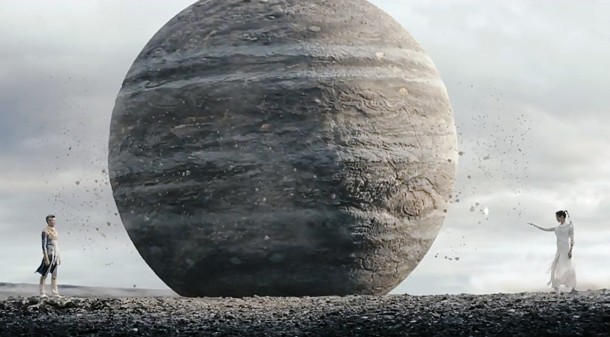
The Making of Ambition
Lukasz Sobisz, is the Technical Director of Simulation for Platige Image’s film, Ambition. The film is directed by Tomek Baginski and stars Aidan Gillen and Aisling Franciosi. In an interview about the European Space Agency’s Rosetta Mission and the accompanying film, Ambition, Sobisz expressed his surprise that the European Space Agency would need the creative skills of the film-making company for which he works.
I’m very surprised you need something like this at all now. Mankind sends a probe into space to catch a comet and land on it, and we need a great director, film, and actors to convince people this is interesting.1
Works Cited:
Ambition. Directed by Tomak Baginski. Performed by Platige Image. 2014.
The Making of Ambition. Directed by Wojciech Jagiello. Performed by Lukasz Sobisz. 2014.
1 (Sobisz 2014)
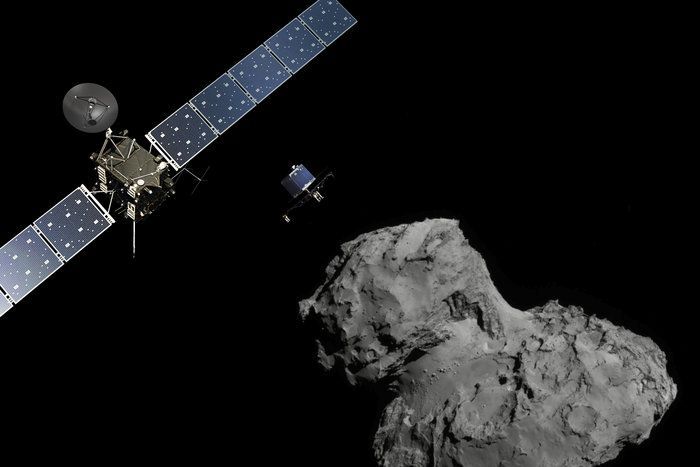
Rosetta and Philae Communicating Again
In November of 2014, the Rosetta spacecraft delivered the Philae lander to the surface of Comet 67P/Churyumov-Gerasimenko (see my previous blog here). This represented the first soft landing of a spacecraft onto a comet. This in itself was a great accomplishment despite the fact that the mission did not go quite as planned. The Philae lander was intended to send back data on the composition of the comet but landed in a region where its solar panels were shaded by a cliff and, after 57 hours of operation, it could not recharge sufficiently to achieve all of its science operations. The onboard computers powered down into hibernation mode and its orbiting partner, the Rosetta spacecraft lost radio contact with the lander.
However, as anticipated, as the comet has continued its approach to the sun, and solar energy has become more intense, the Philae lander has been able to recharge sufficiently to reconnect with the Rosetta orbiter. The European Space Agency (ESA) has confirmed that on June 19, 2015 several packets of lander information were delivered to Rosetta1. The two spacecraft are again communicating and this is a very hopeful sign for the mission analysts. The comet will make its closest approach to the sun on August 13 and the agency is hopeful that the increasing solar intensity will allow the lander to continue to gain charging capabilities and restart its science operations.
Meanwhile, the Rosetta spacecraft continues to send images and scientific data to earth as the ESA has extended its mission until September 2015. Rosetta will continue sending back images and data related to the comet while anticipating more data from the Philae lander. The European Space Agency continues to dream about how best to utilize both vehicles and is now considering landing Rosetta on the comet at the end of its lifespan. The ESA even has a cool mini-movie that addresses the importance of such missions that is designed to inspire ambition. Check it out here.
1 http://blogs.esa.int/rosetta/2015/06/19/rosetta-and-philae-in-contact-again/

Jon Foreman (lead singer, guitarist, main songwriter for Switchfoot) has new solo music out. He released an EP to NoiseTrade called Old Seasons, New Day and one of the songs on that EP is called “Broken From the Start.”
In this song he is wrestling with his mortality with words like, “When our cords are cut that’s when we start to die” and “Lately every breath feels like I’m kissing death.” In the last verse he recognizes that as an artist he may never be truly respected until he is dead: “they still won’t pay respect until you die.”
Why all of this pointing to death? The chorus gives us some insight.
If you hide yourself deep inside
Deep inside
In time you’ve got nothing left to hide
There’s nothing left inside
Tonight, honey
I’m gonna break your heart
Mine was broken from the start
Broken from the start
Despite the fact that we are “born to die,” we cannot lock ourselves up deep inside. Our hearts need to be broken. We need to open ourselves to others and to someone greater than ourselves. There must be hope beyond the mortality of this life.
Broken From the Start
(words and music by Jon Foreman)
(Listen while you read the lyrics)(Oh, oh, oh, oh, oh)
Life is a gift like fresh cut roses
Cut from the branch and brought inside
It’s a slow contradiction, it’s beauty in a vase
When our cords are cut that’s when we start to die(Oh)
Lately death and life get so confusing
I can’t tell the difference here tonight
Lately every breath feels like I’m kissing death
And when time is dead I cease to be aliveIf you hide yourself deep inside
Deep inside
In time you’ve got nothing left to hide
There’s nothing left inside
Tonight, honey
I’m gonna break your heart
Mine was broken from the start
Broken from the start(Oh)
Choice is the only thing we’re given
For one to live another dies
One road says, “Hello”
The other says, “Goodbye”
And the rose that you don’t choose begin to die
(Oh, oh)If you hide yourself deep inside
Deep inside
In time you’ve got nothing left to hide
It dries up inside
Tonight, honey
I’m gonna break your heart
Mine was broken from the start
Broken from the start
Broken from the start
Broken from the startThey won’t pay a cent to hear you laughing
They might pay a little to hear you cry
If you do it long enough
They might even pay attention
But they still won’t pay respect until you die, dieIf you hide yourself deep inside
Deep inside
In time you’ve got nothing left to hide
It’s all dead inside
Tonight, honey
I’m gonna break your heart
Mine was broken from the start
Broken from the start
Today I would like to respond to a blog post written by Kirk Durston. I have never met Dr. Durston but I want to say I appreciate the post he has written even as I will disagree with points made within it. The post does a great service by pointing out many of the doctrines that would need to be examined and adjusted to fit an evolutionary understanding of creation. He notes, with Edwin Walhout, that “original sin,” “salvation,” and “God’s purpose in history” need to be re-examined. I will not take up any response to the issues of our understandings of “salvation” and “God’s purpose in history” for it seems to me that these two are more readily explainable and cause less of an issue than our concept of “original sin” and indeed it is this doctrine to which Durston refers throughout the rest of his post.
Our present understanding of original sin is highly linked to the understanding that historical persons named Adam and Eve lived in the literal Garden of Eden and made choices that were forever passed down to their descendents. Eve sinned first by eating fruit from the “Tree of Knowledge of Good and Evil” and then Adam joined her in this sin. There are several ways in which this rebellion against God is understood to be passed down from generation to generation but the key uniting factor in how this is viewed is that all of the physical descendents of this couple, in some fashion, receive this tendency toward rebellion or this sin into their lives at birth or shortly after. You can already see by my choice of words that there is a great deal of argument, confusion, and disagreement among theologians as to how precisely this occurs; but we will leave that out of things for now.
Durston points out the problem of accepting that humans were created by God through a process that involved ancestors who were more primitive hominids. He shows how this might require that we choose some couple within the evolutionary process to be the original Adam and Eve and make this couple the initial pair in God’s redemptive process for humanity. Yet, the problem with God simply choosing two humans and declaring them to be Adam and Eve, is that the same contemporary science which states that humans descended from other primitive hominids also states that the human population has never been less than a few thousand individuals.This means that we did not all descend from just two individual homo sapiens.
Up to this point, I agree with Durston’s post. It is here that we diverge in our hypotheses of how God began the redemptive process. I, along with such authors as Dennis Venema and Darrell Falk, would begin to disagree with certain statements in Durston’s next paragraphs. There are other ways to solve the difficulties of our present theology than the ones presented by Durston’s post. He rightly points out that the fact that the humans now on this earth descend from a few thousand original humans means that we could push the original chosen couple even further back in time and further back in evolutionary history such that the original Adam and Eve were one of the antecedent hominids. Adam and Eve may have been Neandertals (Homo neanderthalensis) or Denisovans (Denisova hominins) or a combination of the two. Of course this creates other questions with which our theology must wrestle but these are not insurmountable challenges, as Durston seems to suggest.
The other possibility to which Durston points is to suggest that there never was an historical couple named Adam and Eve. Although this may be a difficult concept to accept, again, it is possible to imagine that God speaks to us through Genesis in a fashion that was readily understandable to the people of the time in which it was written and must now be understood in a different fashion. Durston suggests that if we get rid of the concept of an historical Adam and Eve then the New Testament writers “were sincerely mistaken in their acceptance of Adam as a real historical figure” and that the Bible must be viewed as a document containing “divinely inspired misinformation.” I am tempted to take issue with Durston’s use of the words “mistaken” and “misinformation” because, to my mind, these words are too harsh and convey too much about the alleged character of our God, but I do not want to make this the main issue and so let us use the terms which Durston uses. Then we would say that the New Testament writers who refer to an historical Adam would be mistaken and that the New Testament would contain misinformation. Surely Mr. Durston is not unaware of other examples of mistaken ideas and misinformation in the Bible. Take for example the Old Testament commands regarding “clean” and “unclean” animals. Both Leviticus 11:3-6 and Deuteronomy 14:7 state that the hare chews a cud. This is clearly a mistaken concept based on Ancient Middle Eastern understandings. Hares or rabbits do not chew cuds and so this information in the Old Testament is technically wrong and “divinely inspired misinformation.” Despite this fact, we do not call into question the entire Bible or the entire Old Testament. What of Joshua 10:13 which speaks of the “sun standing still” to prolong the length of the day? Wouldn’t it be more accurate to speak of the earth standing still? What of Matthew 13:32 that refers to the Mustard seed as the smallest of all seeds? This is a mistake and represents a false understanding of the scientific world. We could go on with other examples.
Perhaps the New Testament writers were mistaken in their assessment that Adam was an historical figure. Is this an insurmountable theological problem? No. Is integrating an understanding of evolutionary creation going to require that we re-think some of the theology that has been created over the last two millennia? Yes. I respectfully submit that Kirk Durston is not willing to follow some of these possibilities to their theological ends; but they may indeed be workable and consistent with both divine inspiration and scientific discovery. Alternatives that reject an evolutionary understanding of creation have their own theological issues that must be explained. If God did not create humans using more primitive hominids, why do we find such ancient hominids in the fossil record? Why does our own DNA seem to contain DNA from ancient neandertals? Why does the earth and the universe appear to be extremely old?
Theology must work toward answers that are not yet seen. We need new hypotheses that may be tested to see how they work before moving on to seek to explain the next challenges that may come at our collective theologies. I pray that we might be able to live with uncertainty and hope until all uncertainty is banished and we see clearly the object of our hope. Of course, that time will only be when we see “all things with perfect clarity.”1
1 1 Corinthians 13:12 (New Living Translation)
Is Science the new philosophy? Is philosophy dead? Is science still based on hypothesis? Can science make categorical statements about philosophy, theology, and cosmology? People like Steven Hawking and Leonard Mlodinow speak assertively that science has the answers to all questions and that we can do without God terminology.
Science can explain the universe without the need for a Creator. In A Brief History Of Time I used the word “God” like Einstein did as a shorthand for the laws of physics. However, this is not what most people mean by God, so I have decided not to use the term. The laws of physics can explain the universe without the need for a God. 1
Furthermore, Hawking and Mlodinow state that even philosophy is dead. They refer to the vast questions of how the universe has come to be when they say,
Traditionally these are questions for philosophy, but philosophy is dead. Philosophy has not kept up with modern developments in science, particularly physics. 2
I wonder what Rene Descartes would have to say about such certainty in theoretical scientists. Descartes’ writings about science and philosophy have been looked to for generations and suggest a more humble, impartial, and ambiguous approach.
What if we were to call science back to its original skepticism and emphasis on hypothesis? Marilynne Robinson suggests that we are only sane if we recognize that all of our interactions with the world are based on hypothesis.
I tend to draw analogies from science because I believe that our sense of the world is always hypothesis, and we are sane in the sense that we understand this. To proceed by hypothesis is the method of modern science, ideally. It is one of the dominant assessments of modern culture that science, by its nature, drives back the shadows of error. It is this confidence that very often leads science to forget skepticism and to take itself for the unique domain of truth. Many of the darkest shadows of the modern period have been the products of science, and there is no reason to call it by any other name than science simply because it was grossly in error. Racial theory and eugenics are cases in point. I say this because I wish to assert that all thought always inclines toward error. The prejudices that would exclude one tradition of thought, be it science or be it theology, from this tendency are simply instances of the tendency toward error.3
Robinson is suggesting that “all thought always inclines toward error.” Now by that she does not mean that all thought is error; but rather that all thought has a bias and an inclination toward error. We must necessarily guard against this inclination by starting from an hypothesis, testing our hypothesis, and then proceeding to further hypotheses. This indeed is science and can also be applied in the areas of philosophy and theology. Robinson’s novels 4 show examples of the error that persists when an idea becomes unquestioned truth rather than a tentative hypothesis and shows the compounding of error upon error when “truth” can never be questioned. She is calling us to something different; something more cautious and humble.
My prayer is that, in theological debate, in philosophical and scientific debate, we might be much more tentative than assertive. May we hold all of our cherished truths as hypotheses requiring further evidence. I pray that we might be able to live with uncertainty and hope until all uncertainty is banished and we see clearly the object of our hope.
Works Cited:
Guardian Editor. “Gods of science: Stephen Hawking and Brian Cox discuss mind over matter.” The Guardian (http://www.theguardian.com/science/2010/sep/11/science-stephen-hawking-brian-cox), September 2010.
Hawking, Stephen, and Leonard Mlodinow. The Grand Design. New York: Bantam Books, 2010.
Robinson, Marilynne. Gilead. New York: Farrar, Straus and Giroux.
Robinson, Marilynne. “On “Beauty”.” In The World Split Open:Great Authors on How and Why We Write, 121-139. Portland: Tin House Books, 2014.
1 Steven Hawking in “Gods of science: Stephen Hawking and Brian Cox discuss mind over matter” Guardian Editor, “Gods of science: Stephen Hawking and Brian Cox discuss mind over matter,” The Guardian (http://www.theguardian.com/science/2010/sep/11/science-stephen-hawking-brian-cox), September 2010., September 11, 2010.
2 The Grand Design, Steven Hawking and Leonard Mlodinow.
3 Robinson, Marilynne. “On “Beauty”.” In The World Split Open:Great Authors on How and Why We Write, 121-139. Portland: Tin House Books, 2014.
4 See for example, Gilead, Robinson, Marilynne; Farrar, Straus and Giroux; (2004).